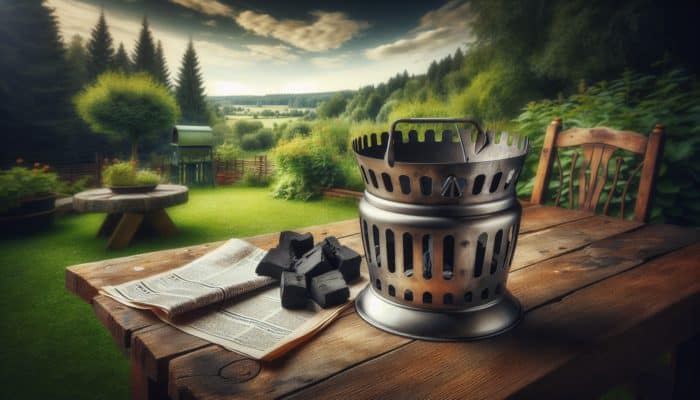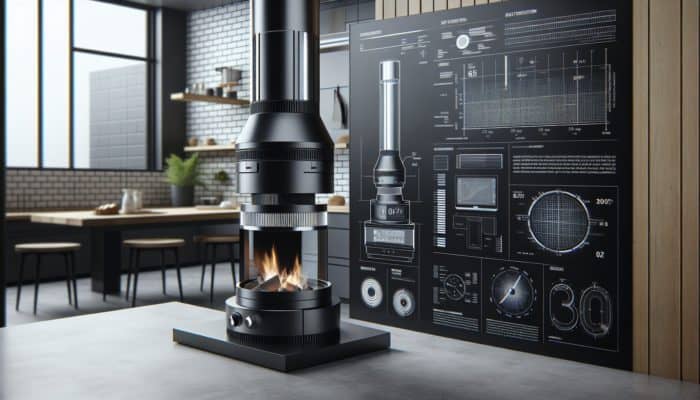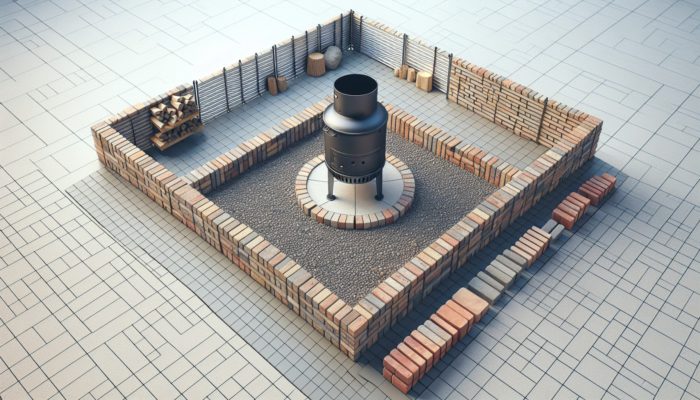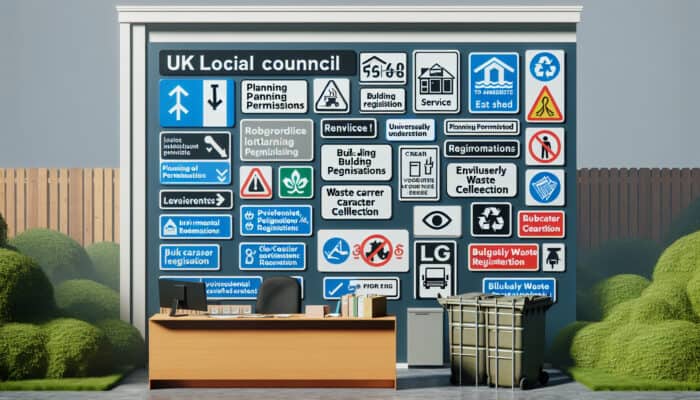Master the Art of Grilling: Choose the Ideal Chimney Starter for Perfect Charcoal Cooking
To truly excel in the world of charcoal grilling, mastering the use of a chimney starter is essential. Whether you’re an experienced grill aficionado or a casual weekend cook, understanding the various types, sizes, and key safety features of chimney starters can significantly enhance your grilling experience. This foundational knowledge not only boosts your confidence but also guarantees safe operation of your chimney starter. By making an informed choice, you can elevate your grilling skills and consistently enjoy delectable meals that impress your family and friends.
Explore the Wide Variety of Chimney Starters Available for Grilling Enthusiasts

As you delve into the world of chimney starters, you’ll discover two main categories: metal and electric. Metal chimney starters, typically made from robust steel, are popular for their cost-effectiveness and dependability. These models are particularly advantageous for outdoor grilling, as they don’t require an external power source, making them perfect for use in remote settings like state parks or your own backyard. Many grill enthusiasts appreciate the traditional approach of igniting charcoal with crumpled newspaper or lighter cubes, a reliable method that has stood the test of time.
In contrast, electric chimney starters offer a modern solution with built-in heating elements that ignite charcoal efficiently and quickly. While they may come at a higher cost, these starters eliminate the need for lighter fluids and provide superior control over the grilling process. This feature is especially useful during busy weekends when you want to fire up your grill without unnecessary delays. By weighing the pros and cons of both types, you can select the ideal chimney starter that aligns with your grilling style and personal preferences.
Find the Right Size and Capacity for Your Chimney Starter to Enhance Grilling Efficiency
Choosing the appropriate size and capacity of your chimney starter is crucial for effective grilling practices. Generally, a chimney starter should be filled to around 2/3 to 3/4 of its total capacity with charcoal to ensure optimal performance. If you frequently host larger gatherings, opting for a larger capacity starter is wise, as it allows you to generate enough charcoal to satisfy your grilling needs. Conversely, smaller starters are perfect for intimate barbecues, enabling you to ignite just the right amount of charcoal without wasting any resources.
It’s vital to ensure the chimney starter you select corresponds to the size of your grill. For instance, a compact kettle grill may not require as large a capacity chimney starter as a spacious offset smoker. By thoroughly assessing your grilling habits and preferences, you can create a more enjoyable and efficient grilling experience, allowing you to focus on refining your technique rather than worrying about uneven heat distribution or inconsistent cooking results.
Need a Quick Summary of Key Points?
Key Safety Features to Look for When Choosing Your Chimney Starter
Prioritising safety is of utmost importance when learning to use a chimney starter effectively. While shopping for your chimney starter, ensure that you choose models equipped with heat-resistant handles and a stable base. These features are crucial for preventing accidents and reducing the risk of burns and spills. A well-designed chimney starter maintains stability during use, which is especially important when transferring hot charcoal to your grill.
Additionally, consider investing in a starter that includes a spark guard or chimney cap, which can help contain embers and minimise flare-ups. This is particularly vital when grilling outdoors in dry conditions or during fire seasons, as these safety features protect both your grill and the surrounding area. By selecting a high-quality chimney starter that prioritises safety, you can enjoy your grilling sessions with peace of mind, knowing that you’ve mitigated potential risks.
Focus on User-Friendliness and Maintenance for a Hassle-Free Grilling Experience

For a seamless grilling experience, it’s best to choose a chimney starter that is both user-friendly and easy to maintain. Look for models that ignite quickly, ideally within 15-20 minutes, so that you can start grilling sooner. Moreover, a chimney starter that features a removable ash catcher makes cleanup a breeze, freeing you to focus on the delicious meals you’re preparing.
Storage options for your chimney starter are also important to consider. Compact designs or those with detachable components are much easier to store away when grilling season comes to a close. The less time you spend on maintenance, the more time you can dedicate to grilling mouthwatering dishes for your friends and family. An efficient chimney starter not only improves your grilling experience but also encourages you to grill more often, ultimately sharpening your skills over time.
Establish a Safe and Efficient Grilling Environment for Optimal Results
A well-structured and secure grilling workspace is essential for effective grilling. Before igniting your charcoal, it’s important to optimise your cooking area for both performance and safety. Taking proactive measures to prepare your workspace can significantly enhance your grilling experience, allowing you to focus on the flavours and techniques involved in using a chimney starter safely.
Create a Designated and Safe Grilling Space
Start by clearing the area surrounding your grill. This involves removing any flammable materials and debris, such as paper products, foliage, or other combustible items. A tidy workspace not only reduces fire hazards but also enhances ventilation, which is crucial for efficient charcoal ignition.
Consider establishing a dedicated grilling zone, perhaps on a patio or deck, located away from buildings or overhanging branches. This not only boosts safety but also elevates your culinary aesthetics. By creating a special space for grilling, you cultivate an inviting atmosphere for family and friends to gather around, making the grilling experience even more enjoyable and memorable.
Ensuring Stability for Your Chimney Starter During Use

Stability is paramount when using a chimney starter. Always place your starter on a stable, heat-resistant surface. Suitable materials include concrete, brick, or stone, as these can endure high temperatures without melting or igniting. Steer clear of wooden surfaces or plastic tables, as they may lack the necessary stability or heat resistance required for safe grilling.
Additionally, make sure your grill is level and secure to avoid accidents. If you’re grilling on an incline, take steps to stabilise both the grill and chimney starter by employing bricks or pavers to create a flat surface. A solid foundation not only boosts overall safety but also enhances your grilling experience.
Shield Your Grilling Area from Wind Disruptions
Wind can greatly impact grilling safety and efficiency. Strong gusts can cause flare-ups or uneven burning of charcoal, complicating the process of achieving that perfect sear on your meats. While preparing your workspace, consider using a windscreen or positioning your grill in a location that protects the chimney starter from strong winds.
Be mindful of the prevailing wind direction in your area and adjust your grill’s placement accordingly. For example, if you’re grilling in a coastal region known for breezy conditions, angling your grill away from the wind can help maintain a consistent cooking temperature. By implementing these precautions, you gain better control over your flames and improve your chances of achieving consistently delicious grilling results.
Fill Your Chimney Starter with Charcoal for Optimal Grilling Efficiency
With your workspace ready, it’s time to fill your chimney starter. Knowing the correct amount and type of charcoal to use is vital for achieving successful grilling outcomes. This step is crucial for ensuring that your charcoal ignites properly and reaches the ideal cooking temperature for your favourite barbecue dishes.
Determine the Right Amount of Charcoal for Your Needs
The quantity of charcoal you fill your chimney starter with can significantly impact your grilling results. For most grilling needs, a chimney starter should be filled to approximately 2/3 to 3/4 of its capacity. This level guarantees there is enough charcoal to ignite and maintain stable heat throughout your grilling session.
Overfilling the chimney starter can lead to a range of issues, such as uneven heat distribution or charcoal spilling out during ignition. This not only poses a potential fire hazard but can also extend cooking times. If you’re uncertain about how much charcoal to use, consider the duration of your grilling session and the specific foods you plan to prepare, adjusting the quantity accordingly to achieve the best results.
Select the Right Type of Charcoal Based on Your Grilling Goals
Choosing the right kind of charcoal is equally important for your grilling success. The two primary types are lump charcoal and briquettes. Lump charcoal is known for its quick ignition and hotter burn, offering a distinctive smoky flavour that many grilling enthusiasts appreciate. This type is ideal for high-temperature cooking methods, such as searing steaks or burgers.
Conversely, briquettes provide a more consistent burn and are generally easier to stack in your chimney starter. They are perfect for longer cooking sessions, like those involving briskets or pork shoulders, where maintaining even and controlled heat is essential. Understanding the characteristics of each charcoal type can help you customise your grilling experience, achieving optimal results while honing your culinary skills and enhancing your flavour profiles.
Tips to Avoid Overfilling Your Chimney Starter
Preventing overfilling your chimney starter is vital for ensuring safety and efficiency. An overfilled starter can cause charcoal to spill out during ignition, creating potential hazards that can lead to burns or uncontrolled fires. A reliable guideline is to fill your chimney starter to the recommended height and refrain from exceeding it.
If you have leftover charcoal after a grilling session, consider storing it correctly for later use instead of overstuffing your chimney starter. This method not only promotes safety but also ensures you’re prepared for your next grilling adventure without wasting resources. By practising proper filling techniques, you can maximise grilling efficiency while minimising the risk of accidents.
Ignite Your Chimney Starter for Perfect Charcoal Combustion
Once your chimney starter is filled, it’s time to ignite the charcoal. This crucial step requires careful attention and adherence to safety protocols. Understanding the best practices for lighting your chimney starter will significantly improve your grilling experience and teach you how to use a chimney starter safely and effectively.
Identify Effective Methods for Igniting Charcoal Successfully
The traditional method for igniting charcoal in a chimney starter involves using crumpled newspaper or lighter cubes. If you choose newspaper, ensure it is crumpled loosely enough to facilitate airflow, which aids in the quick spread of flames. Securely place the crumpled paper at the bottom of the starter, ensuring it adequately covers the base.
Alternatively, lighter cubes provide a modern solution that enables quick ignition without the hassle. Simply place one or two cubes beneath your chimney starter, light them, and watch as the charcoal ignites. This method is especially advantageous in windy or damp conditions, where traditional newspaper may struggle to catch fire effectively. Selecting the right ignition method based on your environmental conditions will streamline your grilling process.
Implement Safe Lighting Practices for a Secure Grilling Experience
When lighting your chimney starter, safety should always be your foremost concern. Ignite the chimney from a safe distance, using a long lighter or matches to avoid burns. It’s essential to maintain a safe posture while igniting, ensuring you remain clear of any flames or sparks that might arise during the lighting process.
Alongside safe lighting techniques, consider wearing protective gloves to shield your hands from heat. This precaution allows you to handle the lighting process confidently while minimising the risk of injury. By following safety protocols, you create a secure environment for yourself and those around you as you begin your grilling journey.
Monitor the Charcoal Ignition Process for Optimal Consistency and Performance
After lighting the chimney starter, it’s crucial to closely observe the ignition process. Ensure that the charcoal ignites evenly, which is typically signified by orange flames and smoke rising from the top of the chimney. Achieving an even burn is critical for maintaining consistent heat, which is essential for obtaining perfect grilling results.
If you notice areas that aren’t catching fire, gently shake the chimney to redistribute the charcoal. This motion enhances airflow and encourages uniform burning. By remaining attentive during this phase, you can effectively manage the ignition process and prepare for the next stages of your grilling adventure.
Exercise Patience During the Charcoal Ignition Phase for Best Results
After successfully lighting your chimney starter, patience becomes an essential trait. Allowing the charcoal to reach the right temperature requires careful observation, and understanding this phase will empower you on your journey to learn how to use a chimney starter safely.
Recognise the Importance of Patience in Achieving Optimal Grilling Conditions
Letting the charcoal burn until it is covered with a layer of gray ash is crucial for successful grilling. This process typically takes about 15-20 minutes. During this time, resist the urge to rush; pouring the charcoal too soon can lead to uneven cooking or, worse, undercooked food.
Consider using this waiting period to prepare your grill and season your meats or vegetables. This way, when the charcoal is ready, you can seamlessly transition into grilling without any delays. The waiting phase is an integral part of the grilling process, allowing the charcoal to reach its optimal cooking temperature.
Avoid Premature Use of Charcoal for Exceptional Results
It can be tempting to use charcoal that hasn’t fully ignited, especially when hunger sets in. However, pouring in partially lit charcoal can create uneven cooking conditions and prolong cooking times. Patience is your ally—wait for that perfect layer of gray ash to form before transferring the charcoal to your grill.
By allowing the charcoal to ignite completely, you create an ideal grilling environment where heat levels remain stable, and cooking times are predictable. The result will be a more gratifying and successful grilling experience, impressing your guests with your culinary skills.
Adopt Safe Handling Techniques During the Transfer of Charcoal
As the charcoal ignites, implementing proper safety measures is essential. Always wear heat-resistant gloves when handling the chimney starter to prevent burns. The exterior of the chimney can become extremely hot, so protect your hands with gloves specifically designed for grilling.
When it’s time to pour the charcoal into the grill, exercise great care to maintain a steady grip and prevent tipping the chimney. This step is crucial for avoiding accidents and ensuring safety, allowing you to pour the hot charcoal without spilling it around your grilling workspace. Prioritising safety during this phase is vital for both your well-being and your overall grilling experience.
Carefully Transfer Charcoal into the Grill for Optimal Cooking Results
Once the charcoal is ready, it’s time to pour it into the grill. This transition requires finesse and precision to maintain safety while achieving the necessary heat levels for outstanding grilling results.
Utilise Proper Techniques for Transferring Charcoal Safely
When pouring lit charcoal into the grill, aim for a steady, controlled movement. Position the chimney starter over the grill’s charcoal chamber and gently tilt it to allow the charcoal to cascade evenly. An even distribution of charcoal ensures that heat circulates properly, providing consistent cooking temperatures across the entire grill.
If you’re using different types of charcoal, consider layering them for a unique flavour profile. For example, you might place lump charcoal at the bottom for a hotter burn and briquettes on top for longer-lasting heat. This technique allows you to customise your grilling experience while ensuring optimal temperature distribution, leading to delicious results.
Strategies to Prevent Flare-Ups During the Transfer Process
Flare-ups are a common challenge when transferring lit charcoal. To prevent this, pour slowly and steadily, allowing the charcoal to enter the grill without overwhelming the airspace. This method reduces the likelihood of hot embers jumping out and minimises the risk of burns or fires.
Keep a close eye on the charcoal as you pour; if you observe any significant flare-ups, step back and allow the flames to dissipate before continuing. Mastering the pouring technique ensures a safe and enjoyable grilling experience, enabling you to focus on preparing your favourite dishes without unnecessary distractions.
Effectively Clean and Maintain Your Chimney Starter After Use
After pouring the charcoal and completing your grilling session, allow the chimney starter to cool completely before storing it. This precaution is critical; a hot chimney starter can pose a serious fire hazard if stored improperly, especially if placed on combustible surfaces.
Once cooled, use a brush or scraper to remove any remaining ash or residue from the chimney starter. Proper maintenance extends the lifespan of your equipment and prepares it for your next grilling adventure. A clean chimney starter is not only safer but also more effective, ensuring that your charcoal ignites effortlessly during future grilling sessions.
Emphasising the Importance of Safety Gear During Grilling
When handling hot charcoal, wearing heat-resistant gloves and protective eyewear is imperative. Even after pouring, embers may pop or fly out unexpectedly. By using the appropriate safety gear, you significantly reduce the risk of burns and injuries, allowing you to concentrate on crafting delicious grilled meals without unnecessary worry.
As you become more comfortable with the grilling process, always remember the importance of using safety gear. Familiarising yourself with these practices will enhance your confidence in grilling, encouraging you to explore new techniques while adhering to necessary safety standards.
Maximise Airflow for Ideal Grilling Conditions and Results
Proper airflow is crucial for achieving and maintaining optimal grilling temperatures. After pouring the charcoal into the grill, arrange the coals to promote airflow. This arrangement might involve creating a pyramid shape or spacing the coals apart to allow air to circulate freely.
Efficient airflow not only helps sustain heat but also contributes to even cooking, enhancing the flavour and texture of your grilled foods. Understanding the dynamics of airflow in relation to charcoal will elevate your grilling skills, unlocking delicious results and rewarding experiences that you and your guests will cherish.
Implementing Essential Safety Measures for Grilling Success
As you embark on your grilling adventures, prioritising safety is essential. By following specific safety precautions, you can enjoy the art of grilling while minimising risks to yourself and those around you.
Create Safe Boundaries for Children and Pets Near the Grill
When grilling, it’s crucial to keep children and pets at a safe distance from the grill and chimney starter. Establish a designated grilling zone that is off-limits to children and pets, ensuring they are safely entertained away from potential hazards. This practice not only protects them from burns or accidents but also allows you to focus entirely on the grilling process without distractions.
Consider implementing barriers or safety gates to create a clear boundary around your grilling area. By taking these precautions, you foster a safe environment for everyone while minimising the risk of accidents during your grilling sessions.
Implementing Safe Storage Practices for Charcoal
When storing charcoal, it’s crucial to keep it in a cool, dry location, away from direct sunlight and moisture. This precaution helps prevent the charcoal from becoming damp, which can negatively affect its ability to ignite. Consider using a dedicated storage bin that allows for ventilation, ensuring that moisture does not accumulate.
Always inspect your storage containers for any signs of damage or deterioration. Selecting high-quality bins and employing proper storage techniques guarantees that your charcoal remains effective and safe for your next grilling adventure.
Properly Dispose of Ashes After Grilling Sessions
After your grilling session, proper disposal of ash is critical for safety. Allow the ashes to cool completely before disposing of them in a metal container. Never place hot ash in a plastic bag or container, as this could result in fires.
Consider recycling the ash by using it in your garden, as it can provide essential nutrients for plants. Proper disposal not only promotes safety but also encourages eco-friendly practices in your grilling routine. By following these disposal guidelines, you can ensure a safe conclusion to your grilling experience while promoting environmental responsibility.
Always Keep a Fire Extinguisher Within Reach When Grilling
Lastly, always have a fire extinguisher readily available when grilling. Familiarise yourself with its location and ensure it is easily accessible in case of an emergency. Knowing how to use a fire extinguisher effectively can save lives and property, providing you peace of mind as you enjoy your grilling sessions.
By adhering to these safety precautions, you can enhance your grilling experience while minimising risks. Embracing safety ensures that you can concentrate on what truly matters: crafting mouthwatering dishes that bring friends and family together.
Frequently Asked Questions About Chimney Starters
What is a chimney starter, and how does it work?
A chimney starter is an efficient tool designed for igniting charcoal for grilling. It allows for a quick and uniform burn without the need for lighter fluid, enhancing your overall grilling experience.
What is the best method for cleaning my chimney starter?
To effectively clean your chimney starter, allow it to cool completely. Then, use a brush or scraper to remove any ashes and residue. Store it in a dry place to prevent rust and ensure longevity.
Is it safe to use a chimney starter indoors?
No, chimney starters should only be used outdoors due to the risk of carbon monoxide buildup and potential fire hazards, ensuring a safe grilling environment.
Can I use lighter fluid with a chimney starter?
Using lighter fluid with a chimney starter is generally discouraged, as it can lead to flare-ups and uneven burns. Instead, opt for newspaper or lighter cubes for ignition.
How long does it typically take for charcoal to be ready when using a chimney starter?
Typically, it takes about 15-20 minutes for charcoal to ignite and become ready for grilling when utilising a chimney starter effectively.
What types of charcoal can I use with a chimney starter?
Both lump charcoal and briquettes can be used in a chimney starter, depending on your desired heat levels and flavour profiles for your grilled dishes.
Should I wear gloves while using a chimney starter?
Yes, wearing heat-resistant gloves is essential for protecting your hands when handling a chimney starter, especially during the pouring process.
How can I prevent flare-ups while grilling?
To minimise flare-ups, maintain a controlled pouring speed when transferring charcoal and keep a safe distance from hot surfaces and open flames.
Can I reuse partially burned charcoal?
Yes, partially burned charcoal can be reused. Allow it to cool and store it properly for future grilling sessions to minimise waste and maximise efficiency.
What should I do if my charcoal fails to ignite?
If your charcoal does not ignite, ensure proper airflow, check your ignition method, and consider using dry newspaper or fresh lighter cubes for improved results.
Connect with us on Facebook for additional grilling tips and tricks!
The Article How to Use a Chimney Starter Safely: Essential Tips appeared first on https://pitmastersarsenal.com
The Article Chimney Starter Safety: Essential Tips for Safe Use Was Found On https://limitsofstrategy.com
References:
https://limitsofstrategy.com/chimney-starter-safety-essential-tips-for-safe-use/



